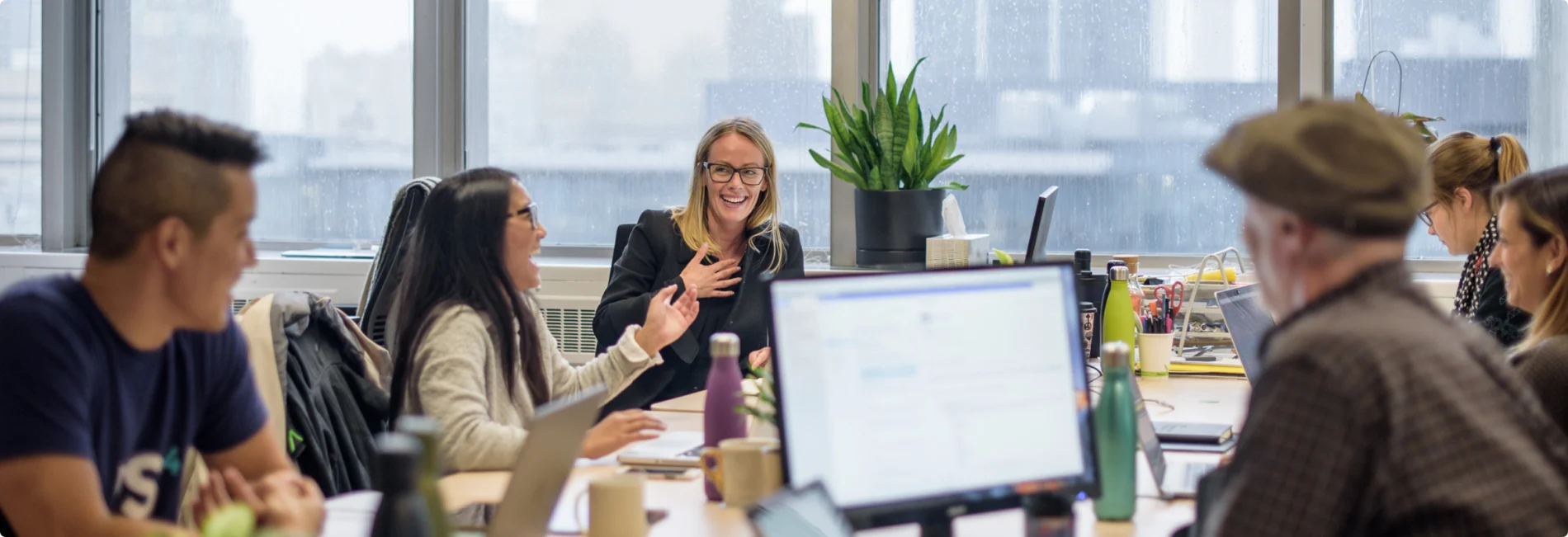Lessons from the trenches – creating a sandbox for innovation
Culture · Oct 28, 2014
Innovation is a buzz word that’s thrown around a lot. Everyone is trying to cultivate a culture of innovation and bring new practices into their business – but they often don’t understand that it’s not all about the innovation, but the outcomes it delivers. By definition, innovating is the act of introducing new ways to do business. To do this successfully within a large organization there are a number of elements necessary, and you need to be prepared to run a marathon every day.
Building a startup within TELUS
Let me give you a snapshot of where we started with TELUS digital. Customer behaviours were rapidly changing; our website (and mobile) experience was behind; things were ridiculously expensive; quality and performance were suffering, and it was taking way too long for us to respond. We needed to act fast – so we took a small group of team members and created TELUS digital labs. This incubated team was given a startup environment to “play in a sandbox”, experiment and innovate on our digital experience. Using a lean approach, we built, measured, learned to fail fast and make changes to our digital experience quickly. Within 80 days, starting from scratch, we re-platformed and re-launched the new telus.com beta site – a website we built with our customers, based on their feedback and suggestions. Not only did we launch a new website, but we leveraged this approach to reengineer our culture, skills and rebuild our entire way of working. Incubating the team wasn’t just about giving them a ‘sandbox’ to play in. It involved creating a dedicated space where they were protected from organizational pressures and norms. It allowed them to experiment, make choices rapidly, evolve processes and, most importantly, make decisions based on customer needs – all without having to ask permission. We empowered them.

Within the TELUS corporate office, we revamped our physical environment, getting rid of cubicle desks and adding large tables and open space for co-creation and collaboration.
Before joining TELUS and leading the TELUS digital team, I had the opportunity to work in a number of small startups. What I found was that, regardless of how big or small a company is, innovation can happen anywhere – as long as you have the right leadership and set up your culture to support your goals. Earlier this year, I had the pleasure of speaking about the TELUS digital team’s “lessons from the trenches” at the 2014 Business Innovation Summit in Toronto. I was joined by a fantastic panel including Alexander N. Rink, CEO of 360pi and Doug Williamson, CEO of The Beacon Group, and was energized by the discussion and questions – here were my key takeaways for the audience: Orient everything you do around delivering value to customers At TELUS, our North Star is the customer. Since January, 2013, we completely rebuilt telus.com and business.telus.com by integrating more than 10,000 customer insights and holding more than 200 usability sessions. No matter what role or area of the organization, our clear and simple vision is Customers First. It’s our common cause – because if the customer wins, we win. Celebrate failure In order to create a collaborative and safe environment – one that’s conducive to solving problems and innovating together – we need to celebrate failure or what we like to call “retrospectives.”
Before joining TELUS and leading the TELUS digital team, I had the opportunity to work in a number of small startups. What I found was that, regardless of how big or small a company is, innovation can happen anywhere – as long as you have the right leadership and set up your culture to support your goals. Earlier this year, I had the pleasure of speaking about the TELUS digital team’s “lessons from the trenches” at the 2014 Business Innovation Summit in Toronto. I was joined by a fantastic panel including Alexander N. Rink, CEO of 360pi and Doug Williamson, CEO of The Beacon Group, and was energized by the discussion and questions – here were my key takeaways for the audience:
1. Orient everything you do around delivering value to customers At TELUS, our North Star is the customer. Since January, 2013, we completely rebuilt telus.com and business.telus.comby integrating more than 10,000 customer insights and holding more than 200 usability sessions. No matter what role or area of the organization, our clear and simple vision is Customers First. It’s our common cause – because if the customer wins, we win.
2. Celebrate failure. In order to create a collaborative and safe environment – one that’s conducive to solving problems and innovating together – we need to celebrate failure or what we like to call “retrospectives”. In the TELUS digital team we’ve built retrospectives into our process. Once we complete a sprint we review our successes and areas of opportunity. Through those insights, we’re able to roll our learnings into the next iteration.
3. Create rituals. Steve Blank wrote a great article titled "Why Companies are Not Startups." In it, he talks about the barriers to innovation and states: “Innovation happens not by exception, but as integral to all parts of the corporation.” Blank outlines how companies need key performance indicators (KPIs), processes and incentives that will enable innovation to be put into practice day-to-day. At TELUS, we’ve built innovation rituals such as demo days, usability sessions, stand-ups and retrospectives into our practices to establish stable teams and drive consistency and predictability in our deliverables.
4. Empower your people. Perhaps the single most important thing you can do to enable innovation is to empower your people. We’ve worked hard to give our teams autonomy, and the benefits have been clear. We’ve seen improvements in three specific areas:
Intrinsic motivation: Empowered teams are happy teams. We’ve seen measurable improvements in team engagement, along with better talent retention and acquisition by giving people more autonomy.
Faster speed-to-market: Empowered teams shake up the orthodoxy around process and tools, and remove waste from delivery methods. Their increased autonomy enables faster decision-making.
Creativity: Creativity generates the ideas needed to drive innovation. Empowered teams are better at harnessing their team members’ insights, take more calculated risks and have the space needed to experiment and creatively iterate to success. Achieving this takes a lot of work. The leadership team has to create a structure that will foster, guide and protect empowered teams, and other business units need to be acclimated to new ways of working. If the teams are willing to take on the extra responsibility, and you can carve out the space for them, their empowerment will deliver the right outcomes.
5. Don’t build something you can’t measure. Last but not least, I want to stress the importance of making data-informed decisions. Whatever your vision or objective, collect the right metrics and constantly measure and assess your progress. At TELUS digital our focus is on the customer and it only makes sense to collect the right metrics to have a constant pulse on the customer experience. We collect data from numerous analytics, feedback forms, face-to-face user testing, surveys, social media and more to help us understand what’s working and what’s not working for customers. Using data to validate each change we make, we’re able to create value for our customers and focus on what truly matters the most to the end user.
In the end, there’s no one formula for success. Innovation takes years, grit and a lot of time in the trenches. To be successful, you don’t need a huge budget or a large team – you need a strong vision, a tireless leader, a unified team and a relentless focus on a common goal. To learn more about our journey, check out the TELUS digital labs blog where we’ve been sharing our lessons along the way.



